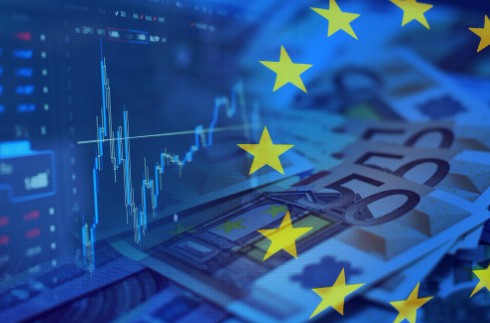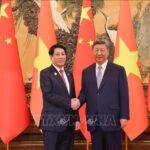On September 29, 2025, the European Stoxx 600 stock index rose 0.3%, driven by gains in the healthcare and technology sectors. Data from August and the second half of September showed improved PMI figures and new orders returning to growth after more than a year of stagnation.

While industrial production activity in eurozone countries declined more than expected in June 2025 and market confidence was challenged by various external risks, indicators released in August and September revealed positive signals. This suggests the region may be entering a recovery phase, though challenges remain.
Data released on August 14 showed eurozone industrial output fell sharply in June, reaching its lowest level since mid-2024. However, second-quarter GDP still grew by approximately 0.3%, reflecting some resilience in the economy amid volatility.
On September 3, the HCOB Eurozone Composite PMI – a comprehensive measure of manufacturing and services activity – rose to 51.0 points in August, crossing the 50-point threshold. Notably, new orders returned to growth for the first time since May 2024, indicating improving market demand.
On September 16, data showed July production increased slightly compared to June. This signals that the manufacturing sector is beginning to recover after a period of sharp decline, though the pace remains slow. By September 23, the latest survey reflected a mixed picture: the services sector continues to be the main driver, while industrial manufacturing has not shown clear recovery.
In financial markets, trading on September 29 saw the European Stoxx 600 stock index rise 0.3%. Healthcare and technology stocks led the gains. Pharmaceutical company GlaxoSmithKline (GSK) rose 2.9% following news of CEO transition. Pharmaceutical company UCB reached record highs due to positive results from a skin disease treatment drug.
Pharmaceutical company AstraZeneca also attracted attention when announcing it would switch from ADR trading to direct listing on the NYSE, while maintaining its headquarters and stock listing in London.
The announcement of AstraZeneca’s decision sparked debate about the future of London’s financial market. Many opinions suggest this move aims to leverage the deep capital markets in the US, while raising questions about London’s ability to maintain long-term appeal for major European companies.
Regarding policy, eurozone inflation in August remained near 2%, close to the European Central Bank’s target. This development led markets to predict the ECB would maintain a cautious stance following previous interest rate cuts.
Long-term, infrastructure investment opportunities are considered one of the important drivers. On June 2, plans were announced to upgrade the power grid system, estimated to require $788.4 billion for distribution networks and $515.2 billion for transmission from now until 2040. A supplementary report on June 9 continued to confirm this massive capital need, opening new directions for Europe’s energy and infrastructure sectors.
The Eastern-Central European region also showed clear differentiation. Poland benefits from EU support funds, helping maintain growth momentum while exports face difficulties. Conversely, in the Czech Republic, large-scale spending plans before elections have raised concerns about budget sustainability.
Additionally, European markets on September 29 closely monitored developments in the US. Budget negotiations between the administration and Congress had not reached consensus, raising the risk of a temporary government shutdown.
In this scenario, many federal agencies would be forced to close. Important economic reports such as employment, inflation, and trade data could be delayed or postponed, affecting investors’ assessment of the global situation.
European stock markets closed September 29 in positive territory, as gains in healthcare and luxury stocks offset declines in banking and energy shares.
US stock markets ended the week on a positive note, with major indices all setting new records following interest rate cuts by the Federal Reserve.
Efforts have been focused on implementing solutions to meet FTSE Russell’s upgrade criteria. “We have carried out strong reforms and decisions with the simultaneous issuance of many mechanisms and policies that take immediate effect to create the most favorable conditions for foreign investment capital






